|
[by Agnes Conway] Mr Horsfield left very early for Petra with the rest of the luggage and slept there. Dr Nielsen and I spent the morning following the aqueduct still further East from Unum el Trab; then North to the bank of the Wady Wahadan, where it follows the Wady West to the railway bridge, and past Ma'an el Sanmijjeto El Basta, on the watershed between Ma'an and Petra. A khan near the Wady Wahadan had the same pottery as the Hammam and Unum el Trab. A glazed stone found at Hammam today is Byzantine. A. C. took compass bearings and photographs of the aqueduct and made a rough map of the system, which can be fitted in to Musil’s map of the Ma’an area in his “Northern Hedjaz”. The date of such an enormous irrigation system is uncertain. The masonry of the Hammam, in tiers of thick and thin stones, is thought by Mr H and by Pere Savignac to be perhaps Roman. Ma’an is never mentioned by classical authors, and A.E.C. thinks the whole system more likely to be Byzantine, about which period at Ma’an there are no European sources. Dr Nielsen would like to prove the system to be Sabaean or Minaean, as the occupation at that time is known to have been extensive; but there are no signs of actual pre-Roman remains above ground.
The system thus far has only been cursorily and inadequately described in Musil’s Northern Hedjaz. He evidently, without a car, could not cover the area, and nor could any of the earlier visitors. In the afternoon we drove on the Akaba road to the head of the Star Pass; from which the view down on to a plain studded with fantastic and detached hills, seen in a violet light, is extraordinarily strange and beautiful. Reference: Conway, A. 1929 (transcribed by A. Thornton). Petra Exploration Fund Diary. "Business Papers to be Kept", Horsfield Collection Box 8, UCL Institute of Archaeology, 22 March: 2-3. [probably by Agnes Conway] Dr. Nielsen and A.E.C. left early, arriving at Petra for lunch, and had to put up at [Thomas] Cook’s Camp, our own not being ready. The Circassians from Jerash and local Arabs worked hard all day, under Mr. Horsfield’s direction, clearing out caves and building an oven. Mr Horsfield, Dr. Nielsen and A.E.C. climbed the mounds of the Roman city to see the points at which Mr H. had decided the dig should be begun. Dr. N. & A.E.C. photographed and examined the well at El Basta on the way down, which seems to be Roman and is very large and well-built. Reference: [unsigned, but probably Conway, A.] 1929 (transcribed by A. Thornton). Petra Exploration Fund Diary. "Business Papers to be Kept", Horsfield Collection Box 8, UCL Institute of Archaeology, 23 March: 3.
[probably by Agnes Conway]
Mr Horsfield spent the day completing Camp arrangements, and all the party moved in in the afternoon and slept there. In a morning of 5 ½ hours Dr Nielsen and A.E.C. visited the Tomb of the Urn, and felt certain that it had originally been a Temple (later decided it was a tomb); and was transformed into a church by making 3 apses out of the 6 Nabataean (tomb) recesses, as suggested by Irby and Mangles. They first tried to climb El Hubta by a staircase which led to El Ramleh, and noticed several places of cult by the way which do not seem to have been described by Dalman1. They then found a direct way up El Hubta and investigated the sanctuaries along the N.W. wall, described by Dalman, which form an elaborate cult centre. Byzantine pottery was found on the Watch Tower. A.E.C. climbed the most southerly lump and copied an inscription of 6 letters, looking like 1916. The language not identified 2. She was struck by the interesting views from that point, of El Ramleh from above with staircases and places of cult; of Zibb Atub with both obelisks and the castle clearly visible; and of Al Bijara, with what looked like artificial work on top, and decided to take telephoto photographs from that point if possible. A plane-table map of the top should be made, as it was left out by Brunnow, and Dalman merely deals with the individual sanctuaries. -- [Footnote] 1. These are quarry cutting remains [Footnote] 2. Nabataean Reference: [unsigned, but probably Conway, A.] 1929 (transcribed by A. Thornton). Petra Exploration Fund Diary. "Business Papers to be Kept", Horsfield Collection Box 8, UCL Institute of Archaeology, 25 March: 5-6. [By Agnes Conway]
A. C. The day, being a Friday, was a holiday from the dig. Dr Canaan began his work on local place names, which he is deriving from the local Bedouins, especially the Bdûl, and took one with him to the Deir. He also began a collection of local flora to get the local names. Dr Nielsen and A.E.C. went up the Wady Turkamaniya to a hill at Idhra’ al Hisha which commands a superb view of the whole city area of Petra and the great mountain circle. The circle at the top of the hill is outlined with enormous stones and was thought by them to be the northern fort of Petra (First discovery of Megalithic circle). They visited the Turkamaniya Tomb and the sanctuary visited yesterday, which turns out to be Dalman’s Ma’aisera Sanctuary No 4. They compared Dalman’s plan on the spot, and considered some of it a romance. Mr Horsfield and A.E.C. went in the afternoon over part of the same ground and decided to dig out the 2 sarcophagi in the vault of the Turkamaniya tomb. Mr Horsfield noticed 2 stone coffins at the bottom of the Turkamaniya Wady, opposite the Tomb, under 10 ft of deposit, which may be very early and unrifled. (Xtian) The stone circle at the top of the hill, unhewn and very small for a fort, he thought might turn out to be the enclosure wall of a very early sanctuary, as a worn away rock inside might conceivably be an early alter and is on the most dominating site in Petra. A.E.C. decided to take telephoto plates of the views in every direction to make a panorama of the Petra basin. They walked down to the Wady Mataba where a wall of large stones built on no foundations canalized the Wady – they followed up lengths of wall as far as the Nymphaeum, all of which represent important problems as the fortification of Petra. Dr Nielsen continued his work on the Sanctuaries on El Habis. Reference: Conway, A. 1929 (transcribed by A. Thornton). Petra Exploration Fund Diary. "Business Papers to be Kept", Horsfield Collection Box 8, UCL Institute of Archaeology, 29 March: 14-15. [By George Horsfield and possibly Agnes Conway]
G. H. Dug at B. v C. to east of Ez Zantour. The pottery similar to that from a 1st cent [? In pencil] at lower level. This part of the city must have been abandoned at this period. And lies S. of Dalman’s Byzantine wall. Spent the morning with Miss C. in El Farasa E. and El Farasa W. exploring tombs. Dug out three tombs that Miss C discovered in Farasa W., moved much filth from two niches – tombs unexcavated – the other had been excavated but yielded nothing but mutton bones and sheep manure. In Farasa W. saw other niches high up in right hand tombs which may contain something – all accessible ones have been visited by local Arabs. Saw interesting cistern found by Mahmud on top of Garden Tomb with a vaulted chamber beyond. Hall of fluted columns visited; corrected plan and made notes in Weygand. The horizontal slit on front looks as though it were intended to spring vault from. Saw new type of Tomb; a low chamber with small square door high up in the wall; one on other side of Wady, - half of which has been cut away – exposing section. Have discovered meaning of the horizontal slits in walls – they are to spring arches from; then the interval is covered with slabs to form roof. At dig in the afternoon – worked quite well – Ali and Arif at one each; spent rest of afternoon in finding N Wall – in which I was successful – but it is very different to Dalman. Cook complains of being roasted – must put shelter over kitchen. A.E.C. went to the Edomite High Place in afternoon and took 3 panorama photographs with the ½ plate camera. Reference: Horsfield, G. [and possibly Conway, A.] 1929 (transcribed by A. Thornton). Petra Exploration Fund Diary. "Business Papers to be Kept", Horsfield Collection Box 8, UCL Institute of Archaeology, 8 April: 28-30. [by George Horsfield and Agnes Conway] G. H. Changed digging back to Katooti [see 4 April entry] – spent morning writing up Hadrianic North part of city wall. Afternoon on dig which I don’t in the least understand. Pottery all [? In pencil] A.E.C. photographed in the morning in El Farasa W. & El Farasa E. and found an enormous cistern near the mouth of Wady en Mer. She took the interiors of 2 tombs with sarcophagi under the ceiling with the half-plate camera in afternoon, in El Farasa W.
Reference: Horsfield, G. [and Conway A.] 1929 (transcribed by A. Thornton). Petra Exploration Fund Diary. "Business Papers to be Kept", Horsfield Collection Box 8, UCL Institute of Archaeology, 9 April: 30. [By George Horsfield and possibly Agnes Conway] G. H. Went on with dig, which was showing signs of reaching undisturbed level. Cleared up all the dangerous overhanging parts. The pottery coming out is mostly fragments of cookery pots – large wine jars with inscribed handles – and some fragments of black glazed ware undecorated. (This Mr Crowfoot says is dated 300-150 BC). A small black lamp slightly oval with a small projection on one side – and poorly modelled – and a spoon-handle broken, same as another found yesterday, came out. Took photographs of S wall and Zantour. In early afternoon bottom was definitely reached at six metres – red crumply sandstone. Have decided to dig a long trench into the tell on S. side near the Habis – beginning Saturday, as that seems to be the most ancient and the deepest place. Paid the men for two weeks’ work; no grumbles and all passed off in an orderly manner. The High Commissioner arrived and is staying with Cooks. [Austen] Harrison write to say he was unable to come and visit us.
A.E.C. spent the morning on the nearer El Ma’aisera ridge looking at Kennedy’s Memorandum queries in connection with the great tomb, Fives court etc. She could find no sign of a sanctuary, but think the whole lay-out may be an elaborate example of the type of enceinte described on the Turkomanya tomb. A new type of tomb turned up, and two unfinished very early tombs, as well as more cisterns. A complete investigation of the ridge might be done and would be interesting if there is time for anything intensive. She took 5 panorama telephoto views from the Edomite circle in the afternoon glow. Reference: Horsfield, G [and probably Conway, A] 1929 (transcribed by A. Thornton). Petra Exploration Fund Diary. "Business Papers to be Kept", Horsfield Collection Box 8, UCL Institute of Archaeology, 11 April: 31-32. [probably by Agnes Conway] A.E.C. spent the morning on Al-Ma’aisera looking at all the tombs leading to the watch-room overlooking the barred Wady Marras Hamdan outside the town. The tombs are particularly small, and there are many niches with facades too small for tombs. When above the Turkomanya Wady, I saw a line of camels which turned out to the be the last of 300 or so, which had come from Hayil, a 20 days’ journey, with 50 Wahabis to look after them. From Ma’an they went by Ain Hai and ain Khraje to El Barid, where they slept last night. They went out by El Thughra on the way to Akaba and a 5 days’ journey to Egypt to sell the camels. They said the Star Pass was too hard on the camels legs and so was the Siq. This seems to imply that El Barid may have been the last station on the way to Petra on the Southern and Eastern Trade Routes, as well as the first station from Petra on the way to Gaza. It was a first hand demonstration of the Trade Routes that we never could have hoped for, and a very fine spectacle. The afternoon went on shopping chores and consultations with Mr Read [Head] about my camera. The “Sybil” focus is all wrong and impossible to use. Reference: [unsigned, but probably Conway, A.] 1929 (transcribed by A. Thornton). Petra Exploration Fund Diary. "Business Papers to be Kept", Horsfield Collection Box 8, UCL Institute of Archaeology, 12 April: 33.
[by George Horsfield and possibly Agnes Conway] G. H. Completed Cave No. 2. which shows only intrusive burials. The back recess is divided in two, the left being larger and slightly deeper – this had one burial, accompanied by a number of small bells which look as though they belonged to camel trappings cylindrical in shape. The shallower niche had a variety of bones including four jaw bones. One burial seemed more complete and between the knees was found a Byzantine bottle with a long neck. A shaft grave was found on right side against wall and was covered by two slabs of scaly sandstone at the upper end – the lower being open. The neck and part of the body of a large Byzantine pot was found under the slab, and the remains of bones in the sand which filled the hole completely. 70 cents down is a groove on both sides extending all the length – which indicates that it was made for more than one occupant. What is under is awaiting excavation. Tomb No. 1 (in front of Triple Dushara) was worked on and yielded more Byzantine pottery. It contains 13 skulls and a mass of bones which are all mixed up together – suggesting that these people had taken refuge in this tomb and eventually died there. The reason not apparent. The pottery is Byzantine and seems to have contained food. A bottle with long neck and handle blackened with [blank] seems an intrusion as it lay on the sand fallen down shafts. Tomb No 2 is cleared to the floor. Lamps, small bowls and some fragments of thin painted pottery turned up [original emphasis]. At the floor level are apparently 4 graves covered with stone slabs awaiting investigation. No 3. shaft has disclosed a chamber – but is full to brim with earth work proceeding – nothing found. Cleared five simple shafts farther to south – found nothing but a mass of stones and broken bones in one – others empty. They were of same type as those in Farasa east, with stone slabs some 60 cents. above corpse – and probably filled in with earth to top. A.E.C. photographed in the Edomite High Place; watched the dig at tomb No 2, (1?) and found a Byzantine cistern on El Ma’aisera made out of an early tomb. She went with Dr. Nielsen in the afternoon to the Kataar el Deir and the Klausenschluct, finding Dalman’s 2 sanctuaries after a great deal of trouble. These are country houses, with niches, water-basins and grottoes; once more a charming country suburb, probably Roman like the Deir. The houses are unusually small, but cut out of the best white sand stone, the dressing of which might have been done yesterday and looks like the finest plaster. On the top of the Hill E. of the road to the Deir from the Klausenschluct, is what may be the remains of a fort with a lot of built stone. Above it are 3 Greek crosses. Reference: Horsfield, G. [and possibly Conway, A.] 1929 (transcribed by A. Thornton). Petra Exploration Fund Diary. "Business Papers to be Kept", Horsfield Collection Box 8, UCL Institute of Archaeology, 24 April: 53-55.
By George Horsfield [and possibly Agnes Conway] G. H. Cleared out the “Tomb” House Triple Dushara and found seven graves which had been broken into but retained in part covering slabs, found bones and burnt ashes with them – but no objects or pottery. They seemed undisturbed below surface. Cleared several shaft graves in vicinity to South – found nothing. One is SW side of Terrace 200 ms. away had mass of bones – human and animal – at the bottom one pot with rim base – of 1st century?
Tombs Nos 1, 2, 3 went on being cleared. Nothing was found in graves. No. 2 had four and was filled with kitchen debris. No. 3 is partly clear but a number of graves not known. So far the evidence obtained gives no indication of Ma’aisera’s age nor character of occupants. Triple Dushara tomb promised well but nothing but very crude burials so far found. All the other Tombs so far examined yielded nothing. The pottery from No 1 all Byzantine? A.E.C. spent the whole morning in grilling sun wearily taking 6 panorama photographs from the Edomite High Place. She visited the dig in the afternoon and the second ridge of El Ma’aisera, puzzling over Dalman’s sanctuary No. 2, which seemed to her a water collecting place and quarry block accidentally left on the roof. But the lower story is also puzzling, as the staircase goes to the roof and gives no access to the 1st floor room with niches. The three huge white stone buildings on this dominating white terrace are unique in Petra, but so much destroyed as to be unfathomable at present. She visited the valley from the Siyagh seen from el Biyara, which proved to be merely a wady with nothing in it and very short. Reference: Horsfield, G. [and possibly Conway, A.] 1929 (transcribed by A. Thornton). Petra Exploration Fund Diary. "Business Papers to be Kept", Horsfield Collection Box 8, UCL Institute of Archaeology, 25 April: 55-56. |
Categories
All
Archives |
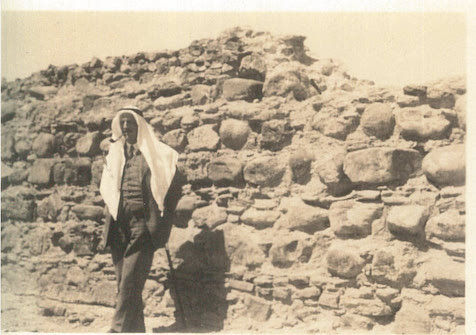
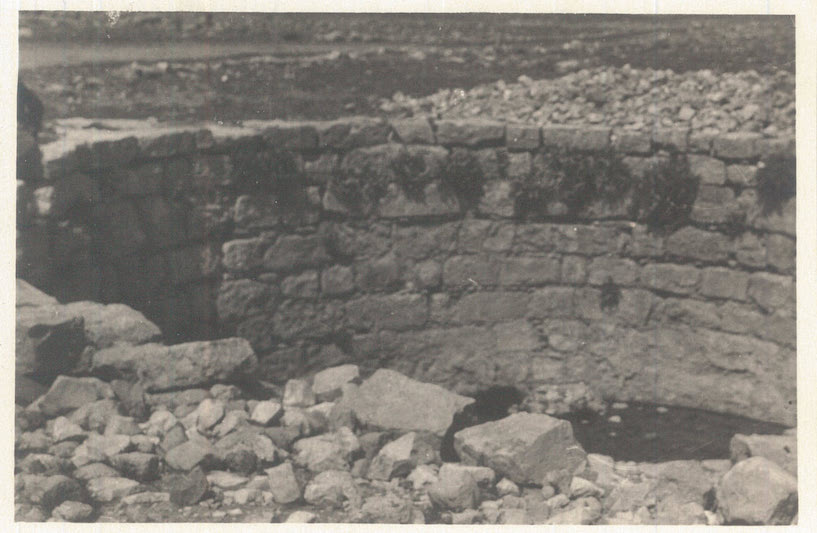
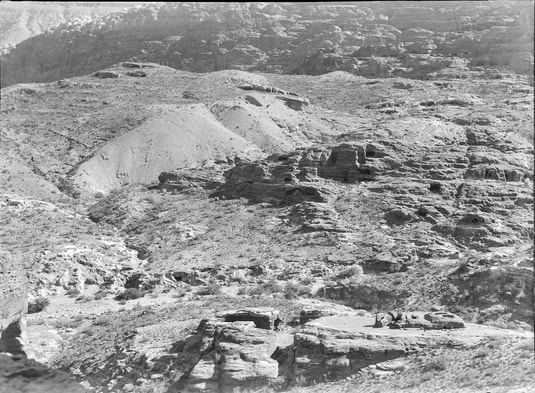
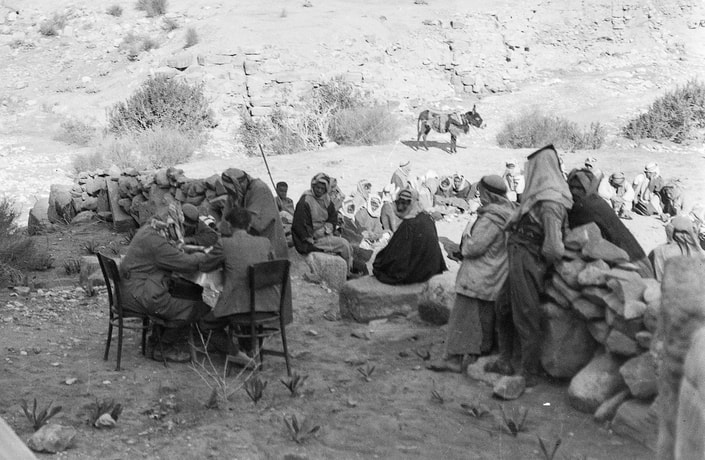
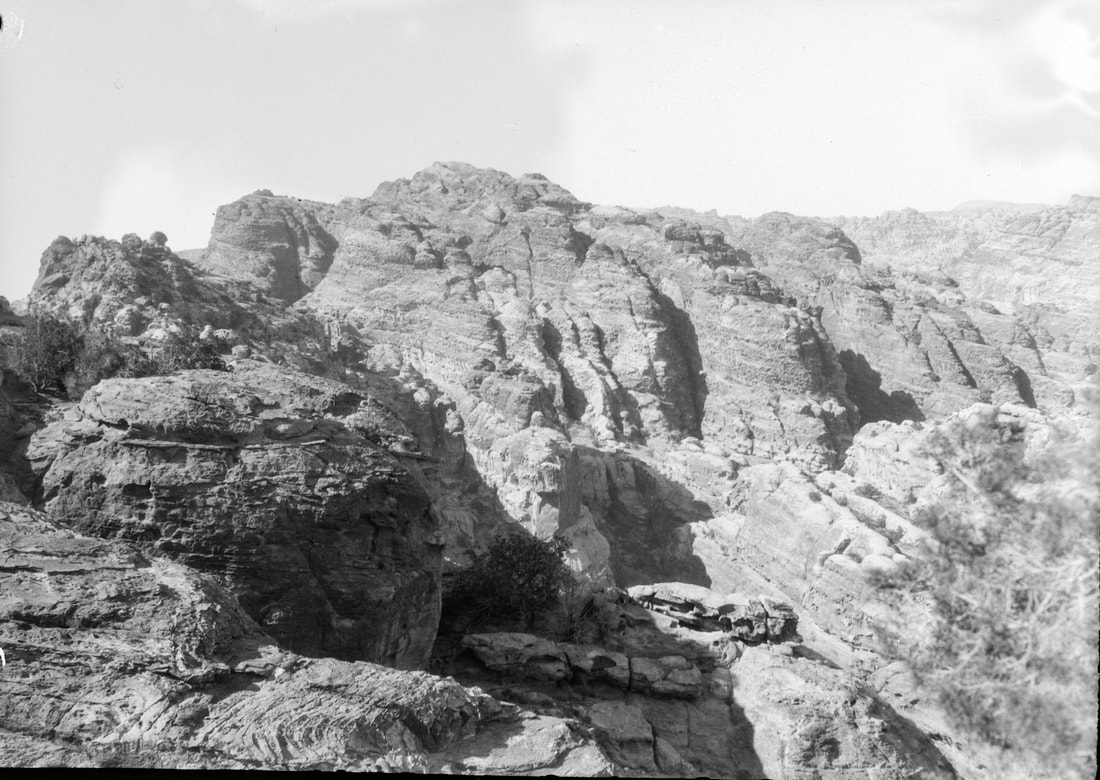
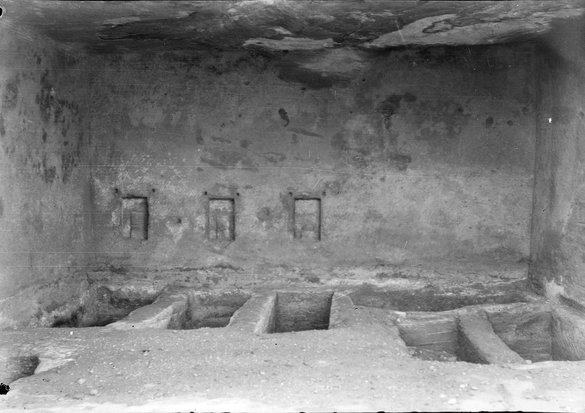
 RSS Feed
RSS Feed